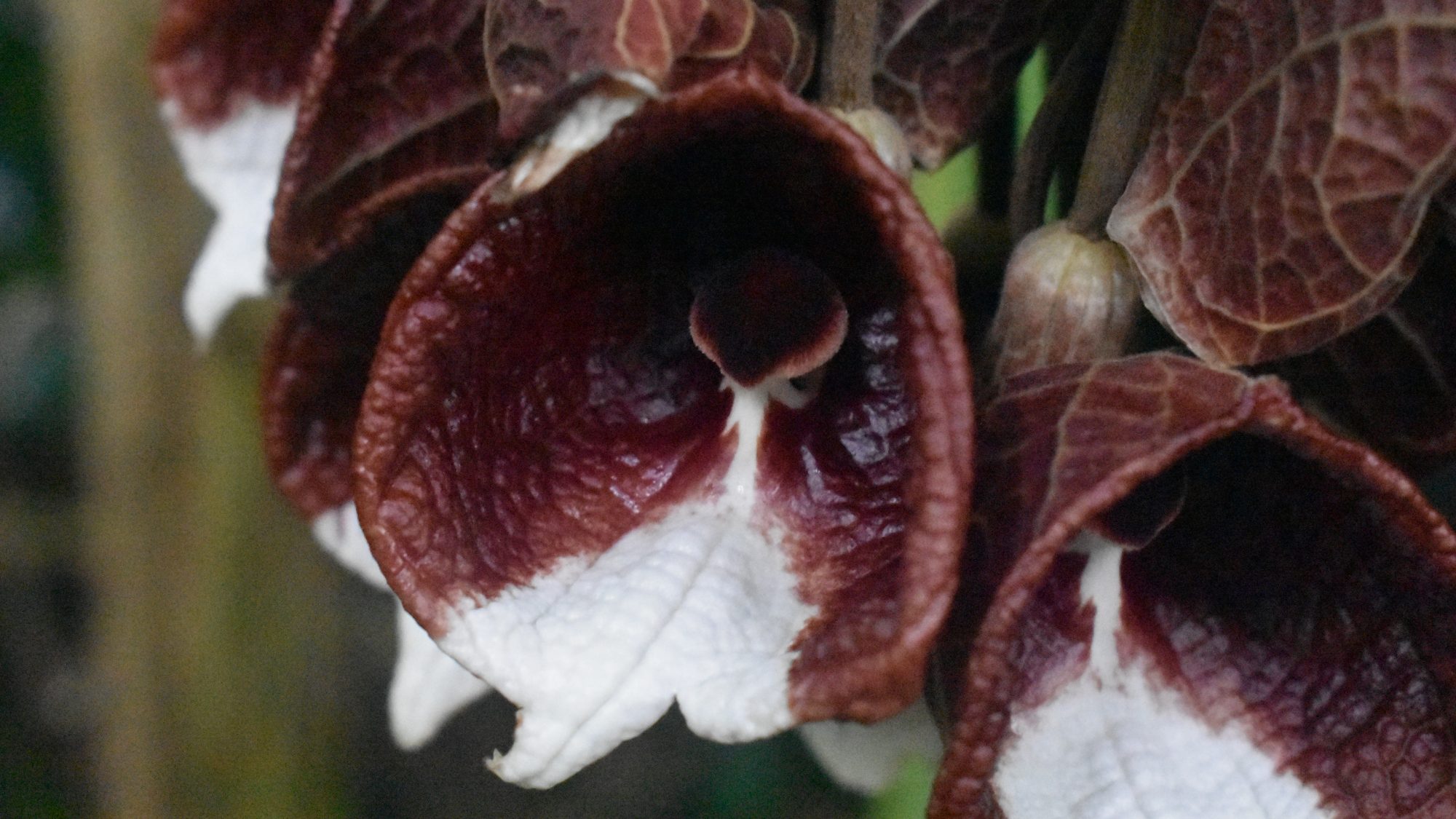This unusual tree is displaying clusters of distinct flowers in the Palm House.
Containing over 550 species the genus Aristolochia is a mainly tropical family with a distribution range of North and South America, Africa, Australasia, Asia and Europe. Members of the genus have distinct flowers, which are often tubular or pipe-like, hence the common name Dutchman’s pipe. Many members of the genus are climbing vines, but A. arborea is a tree from southern Mexico to Guatemala, which grows to 6m in height. The lower stem is often leafless and here dense clusters of striking, deep wine and white coloured, open flowers grow on the corky stem of the plant. The flowers resemble a small-capped mushroom of the Marasmius genus, and have a fungus-like scent to attract fungus gnats and flies for pollination.

